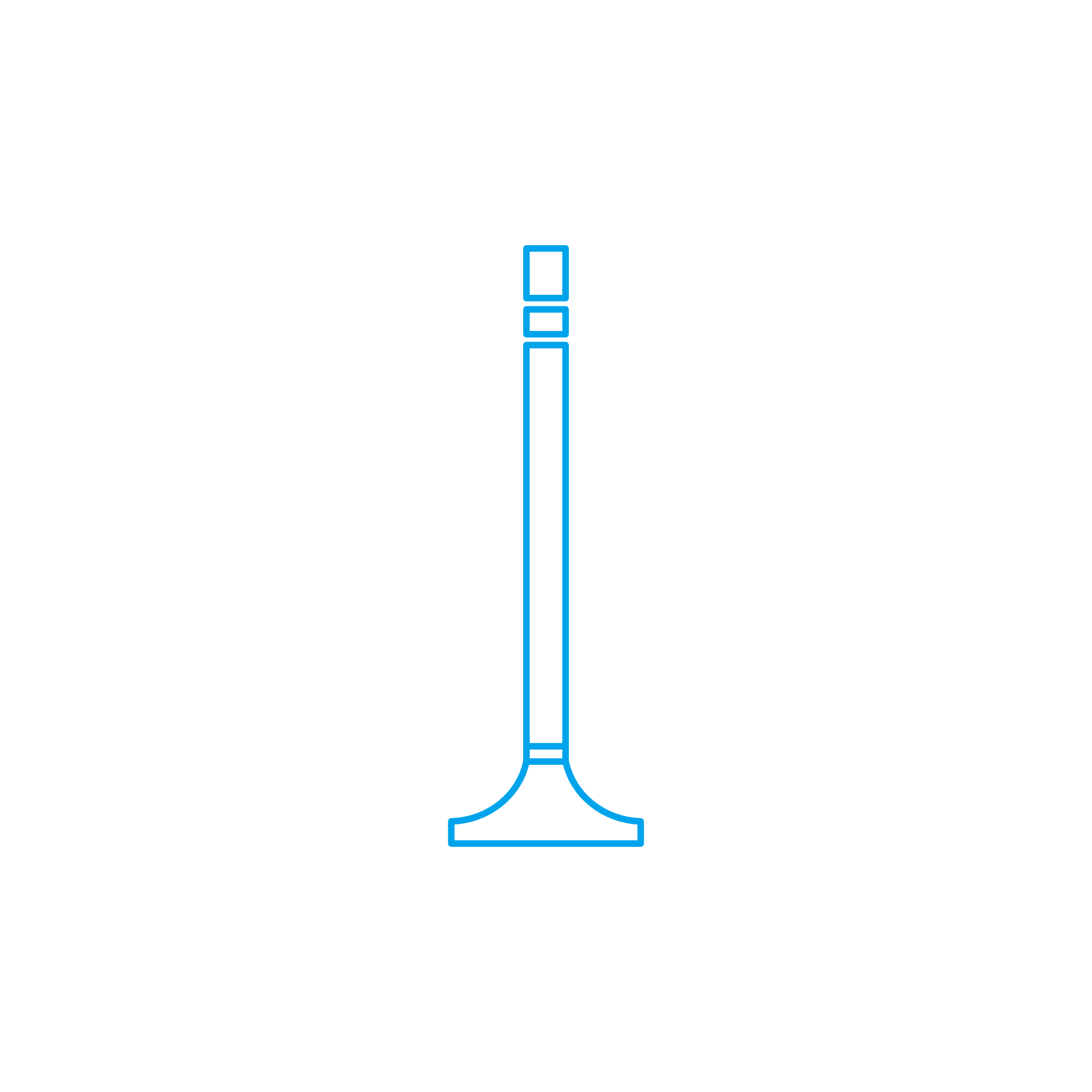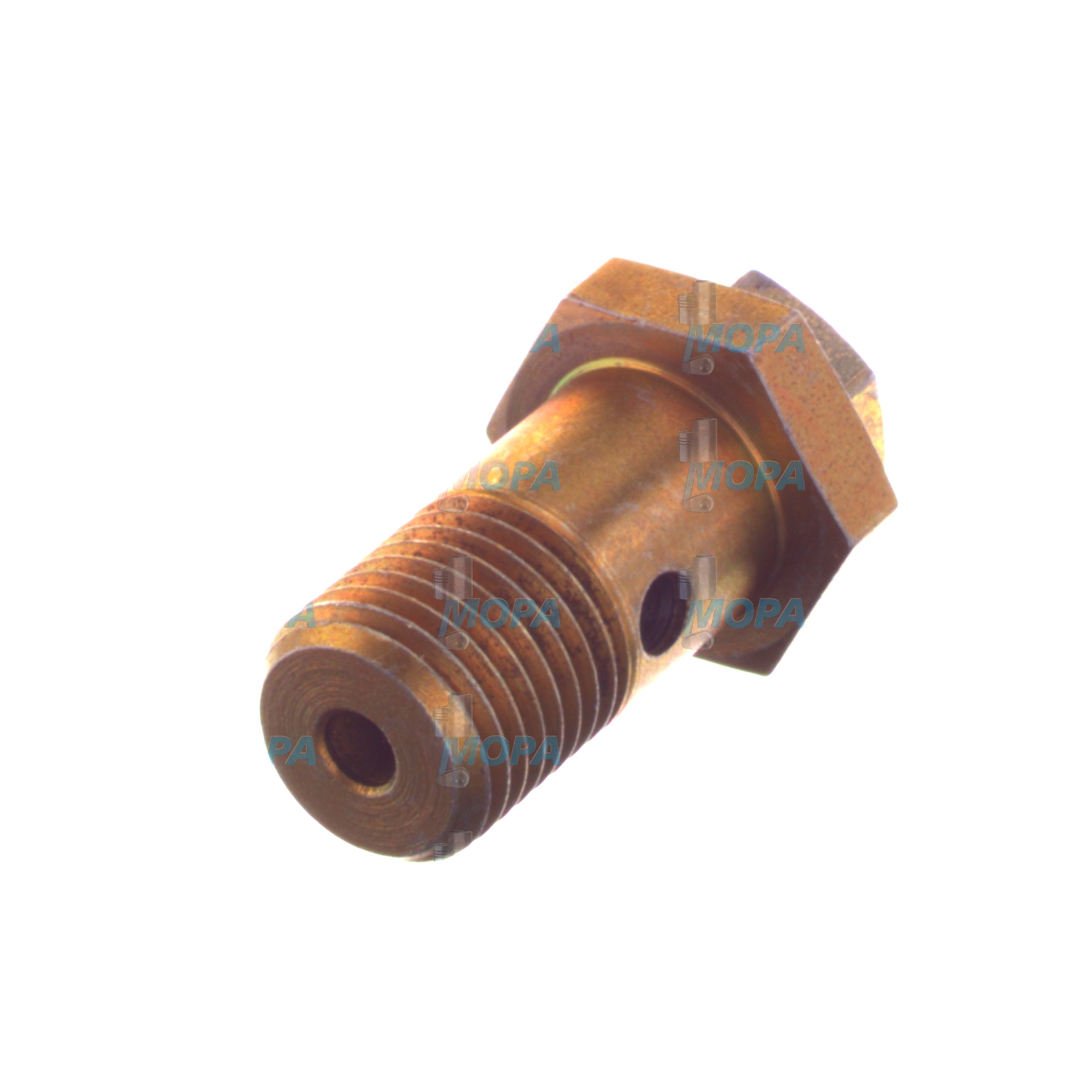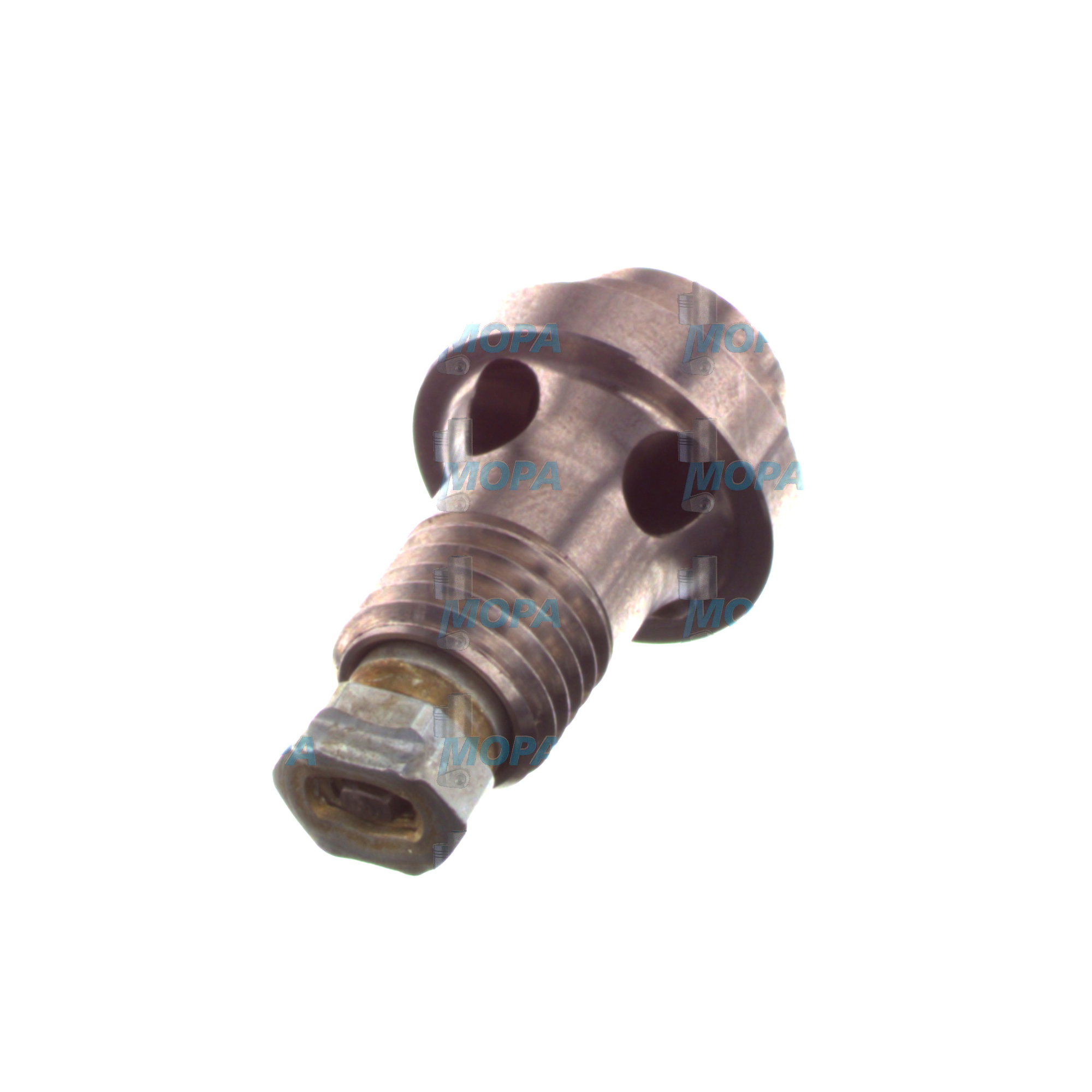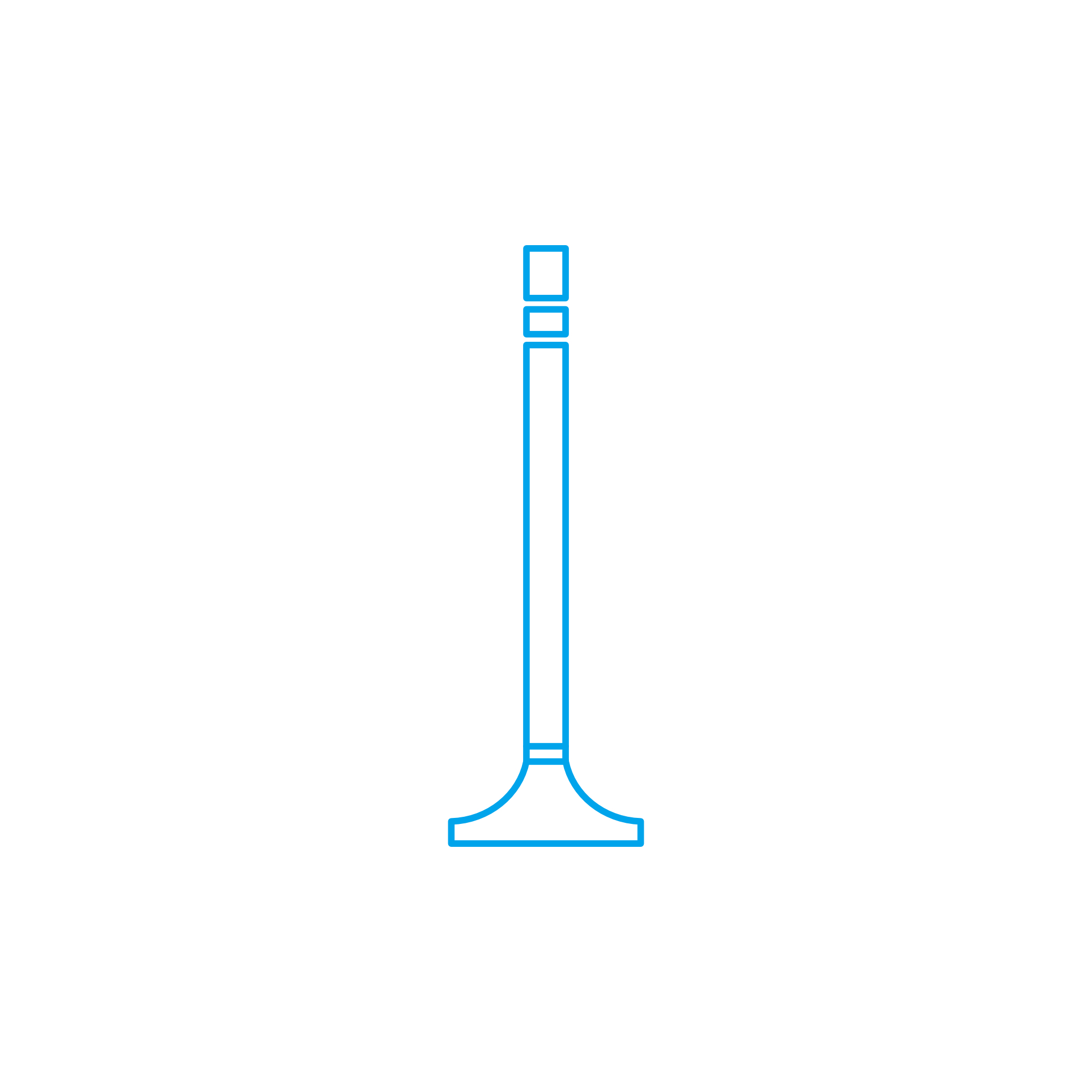AIR SUPPLY VALVE
AIR SUPPLY VALVE and Valves for diesel and marine engines
Valves are precision components that control gas flow, pressure, and timing inside combustion engines. In the cylinder head, they govern the exchange of fresh charge and exhaust gases; around the engine, they manage auxiliary systems such as starting air, charge air, and safety relief. For purchasers and technical decision-makers, the Valves category covers intake and exhaust valves, the AIR SUPPLY VALVE for starting systems, as well as related seats, guides, springs, and actuation hardware. These parts are critical for power, fuel economy, emissions, and safe engine operation in demanding duty cycles.
Across a diesel engine or gas engine, engineered valves translate design tolerances into real-world performance: tight sealing preserves compression, optimized flow reduces pumping losses, and robust materials withstand high temperature and corrosive exhaust environments. In marine applications, the AIR SUPPLY VALVE is equally vital—admitting high-pressure air to start large-bore units reliably and preventing backflow to protect the air manifold and crew.
Technical function of Valves and the AIR SUPPLY VALVE in a diesel engine
Within the cylinder head, intake and exhaust valves open and close in a precisely timed sequence driven by camshafts, rockers, or hydraulic actuators. When seated, the valve face mates with a hardened seat to seal the combustion chamber; when lifted, the valve curtain area and port geometry govern volumetric efficiency and scavenging. Stem-to-guide clearances control lubrication, heat transfer, and alignment, while spring force ensures rapid seating at high RPM to avoid valve float. Metallurgy is application-specific: intake valves often use martensitic steels for strength, while exhaust valves rely on austenitic or nickel-based alloys with Stellite hardfacing to resist hot corrosion and erosion.
The AIR SUPPLY VALVE in a marine engine has a different but complementary role. Connected to the starting air system, it admits compressed air into the cylinder at a defined crank angle to initiate rotation and firing. A non-return arrangement and tight sealing prevent combustion gases from propagating into the air manifold. In a diesel engine, this AIR SUPPLY VALVE enables safe, repeatable starts after port calls, blackouts, or maintenance, especially on large two-stroke and medium-speed four-stroke units. Specified flow capacity, fast closing dynamics, and correct seating forces are essential for both efficiency and safety.
- · Tight sealing preserves compression and reduces blow-by.
- · Optimized flow areas improve power and fuel efficiency.
- · Heat- and corrosion-resistant alloys extend service life.
- · Accurate stem/guide fit keeps alignment and oil control.
- · Surface treatments (nitriding, hardfacing) reduce wear.
- · Reliable actuation ensures timing at rated load and speed.
- · AIR SUPPLY VALVE safeguards starting performance and safety.
- · Engineered for diesel engine and gas engine duty profiles.
Importance for engine operation and lifecycle
Valve condition directly determines reliability, output, and emissions. Seat recession or face burning reduces compression and raises exhaust temperatures, accelerating turbocharger and exhaust-side degradation. Excessive stem wear increases oil consumption and fouling. Weak springs or incorrect lash cause loss of timing stability, misfire, or piston-to-valve contact in extreme cases. For gas engines, leakage raises knock risk and component thermal load.
On the starting system, an out-of-tolerance AIR SUPPLY VALVE can lead to slow starts, failed starts, or, more critically, hot gas blowback into the air manifold. That creates a safety hazard, strains compressors, and can trigger costly unplanned shutdowns. Regular inspection, correct materials, and precise seating geometry are therefore essential to keep engines in class compliance and maintain predictable overhaul intervals.
OEM spare parts suitable for Valves and AIR SUPPLY VALVE: performance, reliability, and budget
Selecting OEM spare parts suitable for the Valves category is a strategic decision that impacts total cost of ownership. These parts are built to the engine maker’s dimensional stack-up and material specifications, ensuring drop-in compatibility with seat angles, stem diameters, keepers, spring rates, and actuator interfaces. For an AIR SUPPLY VALVE, OEM parts mean correct flow coefficients, non-return function, and tested sealing performance under pressure and temperature cycling.
Material integrity underpins service life: heat-resistant steels, Stellite or similar hardfacings, controlled hardness profiles across the stem and tip, and surface finishes that minimize wear in boundary-lubrication regimes. Consistent test procedures and traceability reduce variability, enabling longer maintenance windows and stable emissions. The result is measurable: better compression, stable cylinder pressure balance, lower fuel and lube oil consumption, reduced risk of unplanned dry-docking, and predictable spares budgets.
OEM parts advantages for an AIR SUPPLY VALVE in a marine engine
When you specify AIR SUPPLY VALVE OEM parts, you secure accurate opening dynamics, proven sealing elements, and corrosion-resistant internals suited to humid, saline environments. That reliability translates into safe starting, protected manifolds, compliant safety procedures, and efficient turnaround in port. For fleet operators, consistent performance across sister vessels simplifies inventory and crew training.
MOPA as your partner for OEM spare parts Valves
MOPA is an experienced and reliable partner for OEM spare parts Valves. We support shipowners, power plants, and service companies with a focused portfolio that covers intake and exhaust valves, complete AIR SUPPLY VALVE assemblies, seats, guides, springs, and related components for diesel and gas engines. Our strength lies in speed, quality, and security: rapid sourcing, careful technical verification, and logistics you can count on for time-critical dockings or outages.
With MOPA, you gain a knowledgeable team that understands cylinder head rebuilds, starting air system best practices, and the documentation requirements of class societies. We help you match part numbers, validate component revisions, and align deliveries with maintenance windows—minimizing downtime while protecting engine performance.
Conclusion: Valves and AIR SUPPLY VALVE
Valves—including the AIR SUPPLY VALVE—are core to engine performance, efficiency, and safety. Their precision, materials, and sealing quality determine output and reliability across diesel and marine applications. By choosing OEM spare parts suitable for Valves, you secure consistent performance, longer service life, and better budget control throughout the engine lifecycle.

AIR SUPPLY VALVE with the comparison number N1015000174 suitable for MAN D engines

Convincing Air Supply Valve for Reliable PerformanceThe air supply valve with the comparison number 636B06701/2 is a durable product in the group of valves. This OEM spare part ensures optimal function in engines compatible with the manufacturer MTU. Trust this essential component for the maintenance of your engines to maximize efficiency and responsiveness.Quality Through Internal ControlOur strict internal controls ensure the manufacturing and quality of the spare part. The applications of the air supply valve extend across diesel and gas engines as well as marine and stationary applications. With the comparison number 636B06701/2, you opt for a reliable OEM spare part that meets the highest standards in your infrastructure.

Precise Air Supply Valve for Demanding ApplicationsDiscover our Air supply valve, an essential product suitable for MWM & Deutz engines. With the comparison number 1457413019, this spare part is a reliable solution that enables smooth operation of your engines. Weighing only 0.053 kg, it impresses with compact dimensions and high efficiency.Trust in High-Quality OEM Spare PartsOur Air supply valve is manufactured as a spare part, which means it meets the high standards required for its specific use. This ensures a perfect fit, which is crucial for demanding applications in marine and stationary environments. Rely on this Air supply valve, optimally suited to your needs.

Air Supply Valve – Reliable and EfficientDiscover the air supply valve with the comparison number XP52638200032, designed to meet your requirements optimally. This OEM replacement part draws its strength from proven engineering and an optimized design.

AIR SUPPLY VALVE with the comparison number N1011017360 suitable for MAN D engines

Premium Replacement Part for Your EnginesDiscover the air supply valve, an OEM replacement part with the comparison number 04044380, which is essential for operation in stationary applications. Weighing 1.03 kg, this product offers reliability and lasting efficiency. Rely on the quality that ensures long-term performance!

Optimal Air Supply Valve for Your Drive TechnologyOur air supply valve with the comparison number 02014861 is an essential OEM spare part that is suitable for MWM & Deutz engines. Weighing 5.2 kg, this product combines high functionality and durability to operate your engines more efficiently.

Air Supply Valve – Your Reliable PartnerDiscover our Air Supply Valve with the comparison number 04322934. This OEM replacement part offers the ideal solution for the needs of MWM & Deutz engines. It features a thoughtful design that enhances functionality and robustness.Specifically Tailored for EnginesThe Air Supply Valve is suitable for the requirements of MWM & Deutz. Our valves in the product group "Valves" meet the highest safety standards to consistently optimize your engine's performance.

AIR SUPPLY VALVE with the comparison number SVDVD6-1 suitable for Bosch engines

AIR SUPPLY VALVE with the comparison number 81521106099 suitable for MAN D engines

Air Supply Valve: Your Solution for EnginesDiscover our reliable air supply valve, comparison number 1417413092, an OEM replacement part specifically designed for MAN D engines. Weighing only 0.013 kg, this product offers an excellent solution for your engine requirements and impresses with precise accuracy.

Air Supply Valve for Your ApplicationDiscover our air supply valve with the comparison number 12037522, an indispensable OEM spare part designed for MWM & Deutz engines. It ensures optimal functionality and integrated efficiency, whether you use it in maritime applications or in stationary engines. Weighing only 0.056 kg, this product impresses with its robust features.

AIR SUPPLY VALVE with the comparison number 636B06701 suitable for MTU engines

Air supply valve suitable for MTU engines The air supply valve with the comparison number XP56918300039 is a reliable OEM spare part designed to optimize the performance of your engines suitable for MTU. This product supports smooth operation under the highest demands.

Compelling Product: Air Supply Valve with Comparison Number 01148677The air supply valve (comparison number: 01148677) impresses with its top-notch quality and functionality. This OEM replacement part is suitable for Deutz engines of the series 912, specifically designed for the engine type F6L912. Its efficient design supports the performance enhancement of your engines and promotes longevity, making it an essential component of your applications.Perfect Fit for Deutz EnginesWeighing only 0.04 kg and with compact dimensions of 3.7 cm in length and width, as well as 2 cm in height, this OEM replacement part offers the ideal combination of performance and user-friendliness. The air supply valve is tailored to meet the specific requirements of Deutz engines and makes crucial contributions to optimal functionality, especially in marine and stationary applications.

AIR SUPPLY VALVE with the comparison number 85500011580 suitable for MAN D engines

Optimal Air Supply Valve for Your Engine NeedsThe air supply valve with the comparison number 340104610024 is an essential product for anyone who values performance and efficiency in their engines. This OEM replacement part offers an ideal solution for machines used in demanding environments. This product is suitable for engines from the manufacturers MWM & Deutz, ensuring a precise fit and consistently optimal functionality.Efficiency Increase: Suitable for MWM & Deutz EnginesThe replacement part is suitable for the powerful models of the series 604 DIESEL as well as the engine types TBD604-BL6 and TBD604-L6. It meets the high demands placed on an engine and ensures that performance systems operate smoothly. With this air supply valve, you can enhance the efficiency and lifespan of your engines, whether they are used in marine applications or stationary operations.

Air supply valve with comparison number 1417413094 Discover the air supply valve with the comparison number 1417413094 – a crucial product for your MWM & Deutz engines. Weighing only 0.04 kg, this OEM spare part offers exceptional accuracy and features durable materials. The OEM spare part ensures that your engines operate optimally and deliver the performance you expect.Suitable for demanding applications The air supply valve is suitable for MWM & Deutz engines and plays a key role in the operation of compatible engines for maritime and stationary use. By using OEM spare parts, you rely on proven quality, which is essential for the smooth operation of your engines.

Ideal Valve for Reliable ApplicationsThe air supply valve with the reference number 51125050007 is an essential OEM replacement part that stands out for its top-notch functionality. This product is specifically designed for applications in marine and stationary use and ensures optimal control of engine performance. Rely on quality products that meet the demands of your engines – like the air supply valve.Suitable for MAN D EnginesThis air supply valve is suitable for MAN D engines and offers the reliability that is essential due to OEM replacement parts. Unlike effective alternative solutions, this replacement part delivers spectacular results for your engine performance. Trust products from Original Equipment Manufacturers that have proven themselves in demanding applications.

Air Supply Valve – Your Reliable AccessoryDiscover our air supply valve, which serves as a top-quality OEM spare part. The comparison number 604524000006 is your key to this powerful product. With this air supply valve, you ensure the efficiency of your engines, whether for marine or stationary applications.Compatibility for Deutz EnginesThe product is suitable for Deutz and meets the requirements of all engines from this manufacturer. Our OEM spare part impresses with its high quality and low weight of only 0.054 kg, making it an optimal choice for your machinery.

Air Supply Valve - Comparison Number 03720568 The air supply valve with the comparison number 03720568 is an essential OEM spare part that has been specifically designed to optimize the performance of your engines. This product is suitable for MWM & Deutz engines and ensures reliable operation in various applications, particularly in marine and stationary settings.

AIR SUPPLY VALVE with the comparison number 81521106087 suitable for MAN D engines

AIR SUPPLY VALVE with the comparison number 82521616026 suitable for MAN D engines

Air Supply Valve as an Essential ComponentDiscover our Air Supply Valve, an OEM replacement part with the comparison number 0014297944, designed to ensure optimal performance in a dedicated environment. This product is suitable for Mercedes engines and impresses with precise workmanship and durability, making it ideal for demanding applications.
